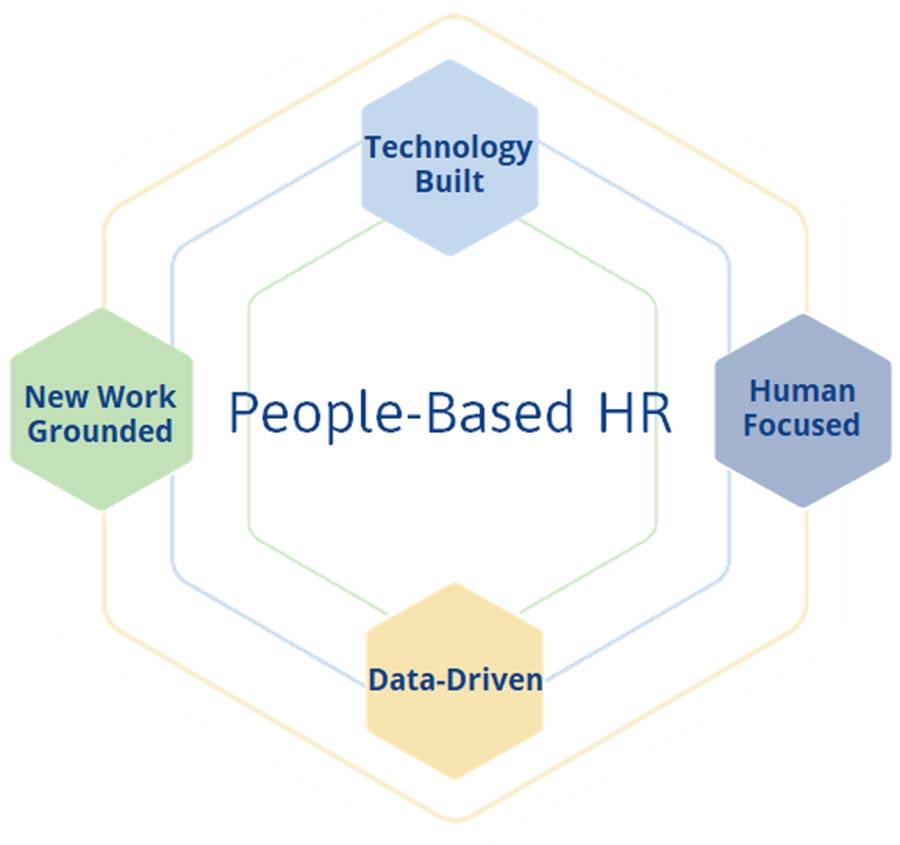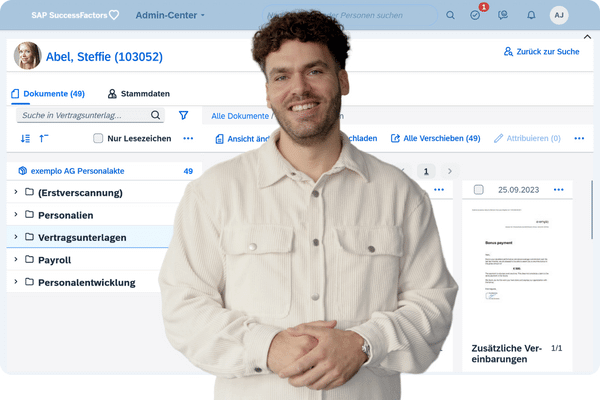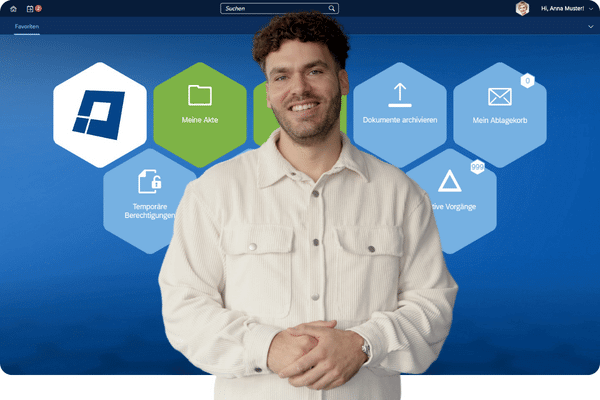People-Based HR
Definition, Tipps und Vorteile. Der Mensch im Mittelpunkt: Wofür steht eigentlich People-Based HR? Welches Ziel wird damit verfolgt und welche Rolle spielt die richtige HR Software?

„Der Mensch ist das Maß aller Dinge.“[1]– Das hat sich auch im digitalen Zeitalter nicht geändert. Neue Technologien begleiten uns in jedem Lebensbereich und passen sich immer wieder aufs Neue unseren Bedürfnissen an. Wir sind fast vollkommen verschmolzen mit unseren Smartphones und können uns ein Leben ohne das Internet kaum vorstellen. Wir begegnen unserer Familie, Freunden und Arbeitskollegen meistens virtuell – Treffpunkt App. Niemals zuvor waren wir vernetzter und konnten Informationen so schnell austauschen wie heute. Seit neuem falten wir sogar unser Handy, wir bezahlen per Smartphone und schalten uns in Sekundenschnelle einen E-Scooter für den Heimweg frei. Szenarien, die bis vor ein paar Jahren kaum denkbar waren. Das digitale Zeitalter brachte uns New Work, künstliche Intelligenz und das Internet of Things und ist damit fest verankert in unserem privaten und beruflichen Alltag. Digitale Tools nehmen uns Arbeiten ab, die wir ungern selbst erledigen und schaffen somit Freiräume. Vor allem im Beruf bauen wir auf clevere Software, die uns das Arbeiten erleichtert.


Moderne HR-Arbeit ist digital und people-based
Unternehmensbereiche, deren Arbeitsalltag vor allem von administrativen Aufgaben beherrscht wird, profitieren am meisten vom digitalen Wandel. In deutschen Personalabteilungen werden 39% der HR-Ressourcen in administrative Prozesse investiert.[2] Wiederkehrende administrative Aufgaben beanspruchen nicht nur zu viele Ressourcen, sie verhindern auch, dass der Personaler seinen Fokus auf den Menschen hinter dem Arbeitnehmer lenkt. Moderne HR-Arbeit benötigt moderne Tools. Um dabei eine optimale Effizienzsteigerung, Kosteneinsparung und Prozessoptimierung zu ermöglichen, braucht es die bestmögliche Verbindung zwischen Technologie und Mensch. Dabei müssen neue Tools vor allem Freiräume und neue Kapazitäten schaffen. Das schaffen Unternehmen am einfachsten mit der Einführung von HR Software. Heute lassen sich bereits ganze HR-Prozesse voll automatisieren. HR-Prozesse müssen mitarbeiterorientiert gestaltet werden, d.h. die Prozesse sollten sich nach der Arbeitsweise und den Bedürfnissen der HRler richten. HR-Software, die einen einheitlichen Workfeed ermöglicht und dabei eine optimale Zusammenarbeit durch aggregierte Aufgabenansichten mit allen relevanten Informationen bietet, gestaltet HR-Prozesse effizienter. Gleichzeitig werden alle Beteiligten eines HR-Prozesses aktiv miteinbezogen. Die Zielgruppe für eine geeignete HR Software erweitert sich dadurch um die Mitarbeiter und die Führungskräfte. So werden Teilschritte, wie Freigaben oder das Anstoßen von Prozessen, an diejenigen übergeben, die direkt betroffen sind. So werden gemeinsame Aufgaben an einem Ort erledigt und wichtige Informationen direkt über die Plattform an den zuständigen Mitarbeiter gesendet.
Zeitgemäße HR-Arbeit heißt heute, neben dem Einsatz von modernen Technologien, HR-Prozesse mitarbeiterbezogen zu gestalten. Definierte Prozesse und Zuständigkeiten sind dabei essenziell. Gleichzeitig ist es wichtig, die Bedürfnisse seiner Mitarbeiter zu kennen und ihnen passende Tools an die Hand zu geben, die ihren Arbeitsalltag erleichtern und die Produktivität steigern. Dabei sollte die Software in der Lage sein, komplexe Prozesse in automatische, optimierte Arbeitsabläufe umzuwandeln. Eine kontinuierliche und einheitlich positive Benutzererfahrung über alle HR-Anwendungen hinweg, sichert dabei eine langfristige Prozessoptimierung. Personalisierte Aufgaben und Informationen sind so genau dann verfügbar, wenn es darauf ankommt. HR Workflows, die von jedem Gerät, ortsunabhängig ausgeführt werden können, geben dem Mitarbeiter so die Möglichkeit, Aufgaben von unterwegs aus zu erledigen. Ein ansprechendes und übersichtliches User Interface, das ein barrierefreies Arbeiten ermöglicht, stellt selbst Menschen mit sprachlich-verbalem oder visuell eingeschränktem Verständnis ein praktikables Werkzeug zur Hand, das den Arbeitstag erleichtert.
People-Based HR ist data-driven
Mitarbeiterbezogene HR-Arbeit heißt auch, den wertvollen Datenschatz der Personalabteilung zu nutzen. People Analytics ist ein aktiver Teil von People-Based HR und schafft es, durch die Kombination von Daten aus verschiedensten Quellen gezielte Fragestellungen zu beantworten. Diese können sich nicht nur auf die Vergangenheit oder Gegenwart beziehen. Durch Predictive Analytics, hat HR die Möglichkeit, Kennzahlen zukunftsbezogen anzuwenden und Zusammenhänge zu erkennen. Aus den Kennzahlen lassen sich Einflussfaktoren identifizieren und konkrete Handlungsempfehlungen ableiten. Ist in einem bestimmten Zeitrahmen eine erhöhte Fluktuationsrate zu erkennen, lassen sich durch die Datenanalyse mögliche Gründe erkennen und Warnsignale für sich eventuell wiederholende Szenarien in der Zukunft ausmachen.



